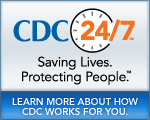EID
Highlights: Emerging Infectious Diseases, Vol. 16, No. 1 January 2010
Disclaimer
The following articles will appear in the January 2010 edition of Emerging Infectious Diseases, CDCa€?s monthly peer-reviewed public health journal. The articles are embargoed until Dec. 16, 2009, at 12 p.m. ET.
1. Hepatitis E Epidemic, Uganda
Eyasu H. Teshale, et al
In just two years, northern Uganda went from having no hepatitis E virus (HEV) outbreak to having one in which more than 10,000 people got sick and 160 died (mostly pregnant women and children younger than age 2). Researchers theorize that perhaps the epidemic took hold because, without prior outbreaks, the Ugandan people had not been exposed to hepatitis E and thus had no immunity to it. If so, then developing a hepatitis E vaccine should be moved higher up on the list of existing prevention plans.
Contact Dr. Eyasu Teshale via:
Press Office, National Center for
HIV, Hepatitis and STD Prevention, CDC
404-639-8895
2. Food Reservoir for Escherichia coli Causing Urinary Tract Infections
Caroline Vincent, et al
When people think of food and illness, they usually think of stomach pain and diarrhea, not urinary tract infections. However, after researchers found the same germ in chicken meat and some other foods, and in people with urinary tract infections, they concluded that these infections may have been caused by germs that came originally from food sources. These infections are hard to treat because these germs have become resistant to many antibiotic drugs. Antibiotics should be used carefully in both people and animals so that these drug-resistant germs dona€?t continue to spread.
Contact:
Amee Manges, MPH, PhD
Department of Epidemiology, Biostatistics and Occupational Health, McGill University Health Centre Research Institute
McGill University
(514) 398-3267
amee.manges@mcgill.ca
3. Reemergence of Syphilis in Martinique, 2001a€“2008
Andr?? Cabi?? et al.
In just a few years, the sexually-transmitted disease syphilis went from being considered rare to an uncontrolled outbreak on the relatively isolated island of Martinique. Researchers found that syphilis started reemerging mostly among HIV-infected homosexual men and then spread to heterosexual men and women who either were or had had sex with recent prisoners, crack cocaine users, and sex workers. Bisexual behavior may have helped spread the disease. Researchers are recommending that prevention messages tell people which sexual behavior puts them at risk for syphilis and how to protect themselves from the disease.
Contact:
Bernard Liautaud, MD
Infectious and Tropical Diseases Unit
CHU (University Hospital) of Fort-de-France
Bliautaud1@wanadoo.fr
4. Seagulls and Beaches as Reservoirs for Escherichia coli
Rom??o Rocha Sim?μes et al.
Ah, the beach! Sand, seagulls, and . . . sickness? Researchers have found that seagulls in Portugal can carry Escherichia coli (E. coli) that can infect people. This hardy germ is very resistant to drugs, which makes the infection hard to treat. Infected seagulls spread E. coli in their droppings on the sand. When researchers found the same germ in the bird droppings as in hospitalized people, they concluded that people were getting infected by these bird droppings on the beach.
Contact
Patrice Nordmann, Professor and Emerging Infectious Diseases Associate Editor
H?′pital de Bic?atre - Service de Bact??riologie-Virologie
Le Kremlin-Bic?atre, France
nordmann.patrice@bct.ap-hop-paris.fr
####
- Historical Document: January 21, 2010
- Content source: Office of the Associate Director for Communication
- Notice: Linking to a non-federal site does not constitute an endorsement by HHS, CDC or any of its employees of the sponsors or the information and products presented on the site.
View Press Releases in
Get e-mail updates
To receive e-mail updates about this page, enter your
e-mail address:
Contact Us:
- Centers for Disease Control and Prevention
1600 Clifton Rd
Atlanta, GA 30333 - 800-CDC-INFO
(800-232-4636)
TTY: (888) 232-6348 - Contact CDC-INFO


